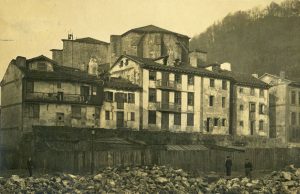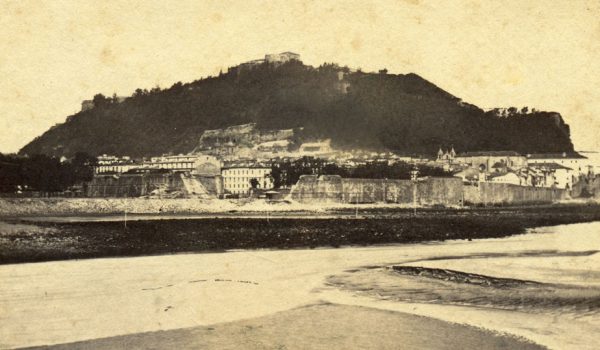The destruction of the San Sebastian’s defenses
On 4 May 1863, a very significant and important event in the history of San Sebastian took place, it was a Monday, and although it was raining, Donostia was dressed for the destruction of the San Sebastian’s defenses.
The thick walls that had protected the city since the Middle Ages but limited its economic development. A huge marching band went through all the streets, as did a leaflet that was distributed to all the residents by the city council, which was signed by the mayor of Donostia at the time, Eustasio Amilibia.
It said:
“Inhabitants of San Sebastián: The walls that surround this city are going to be demolished. Her Majesty, having accepted our supplications, has deigned to grant us this grace so ardently longed for. To her we owe the advantages that await us, and our gratitude will be eternal.
New efforts are necessary on our part to complete such a great undertaking, but we shall devote it to the good of our beloved people; their future destiny demands it, and in the face of this conviction we shall not hesitate; let us all run to this regenerative work, and let us hope with faith in the future.
Posterity will keep good memories, which is the best and most enduring prize.
The Town Council that speaks to you appreciates the sentiments already expressed in the neighborhood, to help the municipal corporation in the first moments of demolition. Those who wish to render this patriotic service, whether personal or pecuniary, may now go to its secretariat. There, a register will be opened to record the offers made and they will be used appropriately.
Let us reiterate on this occasion our constant wishes for the happiness of the second Isabella of Castile”.
A happy ceremony, but one that was waterlogged
The rain was pouring down steadily, but at midday there was a crowd of Donostiarras waiting for the ceremony to begin. After the arrival of the official procession, which was greeted with songs by the locals, the civil governor Benito Canella Meana, the mayor pulled a stone out of the embrasures with a crowbar, amidst cheers. As more and more pieces of the wall were pulled out, they were given to the neighbors. The largest fragment was kept in the town hall.
Once the ceremony had begun, and thanks to the tenacity of the neighbors, two large holes were opened. One in front of the Beraza inn (in what is now Ijentea Street) and the other in front of the Brecha. But the final order to demolish the walls was delayed for another year.
A break with the past
With that ceremony San Sebastian broke not only with a wall, but also with a dark, violent and certainly traumatic past. It allowed the people of the city to experience a certain normality that until then had been denied to them. No more opening and closing times for the city gates, no more being locked out if you arrived after hours. Until then, strolls in San Sebastian had to take place outside the city walls, as there was no room behind the walls, but this would soon change with the expansion of Donosti. Popular amusements and entertainments went from being only games on the fronton (using the city walls for this purpose), to the aforementioned walks and the music and dances in the fields outside where the city’s bands played with their txistus and tambourines.
No more living without a horizon in a dark city enclosed behind walls, dark and claustrophobic. Nowadays it is difficult to imagine a San Sebastian from which you could not see the sea or the mountains unless you left the city limits.
But the wall was used for something else, as its remains were used to fill in the area of the Zurriola promenade (the current gardens of the Plaza de Okendo). And in the space between the wall and today’s Avenida de la Libertad, the first elegant French buildings, which we still have today, appeared within five years.

Photo from the Rafael Munoa Roiz photographic collection.
All these things and more are discussed in our Free Tour of San Sebastian!

